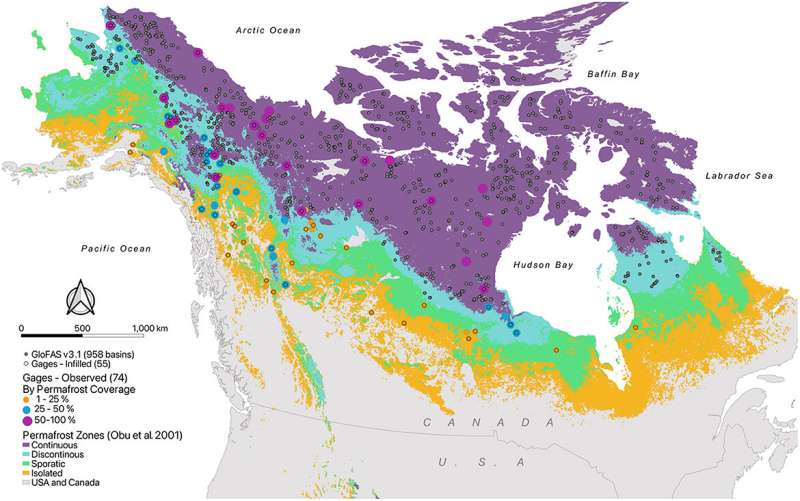Arctic permafrost runoff driven by climate change

Rising temperatures and changes in precipitation are driving increases to streamflow in areas of high-latitude North America where permafrost dominates the landscape.
"We saw long-term trends of increasing streamflows in the Arctic that reflect how deeper layers of the permafrost are thawing and releasing water," said Katrina Bennett, a hydrologist at Los Alamos National Laboratory and lead author of a recent paper on permafrost streamflows in the journal Frontiers in Water. "In general, we found that all areas with at least some permafrost coverage were experiencing higher streamflows overall and higher minimum flows as the Arctic climate warms up."
Bennett and a team from Los Alamos and the International Arctic Research Center at the University of Alaska Fairbanks analyzed diverse, challenging data sets for hydrology in the permafrost region.
The analysis makes it clear that changes in precipitation and higher temperatures under climate change are driving these trends of increasing streamflow from permafrost melt over the 46-year study period.
Other variables, including the extent of permafrost coverage, became more important in the past 32 years, according to the study.
Areas with more than 50% permafrost coverage had significant increases in mean streamflow, while all areas, including those with much less coverage, saw increased minimum flows.
In areas dominated by permafrost, maximum streamflow and its timing are shifting variably, Bennett said, with significant increases during fall and winter.
"These findings appear to indicate that permafrost is playing an increasingly focal role in changing trends across all components of the streamflow seasonally," Bennett said. "We seem to be seeing enhanced thawing of frozen grounds in more recent years of the study, as the high latitudes experience more precipitation and warmer temperatures."
The work is published in the journal Frontiers in Water.
More information: Katrina E. Bennett et al, Recent streamflow trends across permafrost basins of North America, Frontiers in Water (2023). DOI: 10.3389/frwa.2023.1099660
Provided by Los Alamos National Laboratory
No comments:
Post a Comment